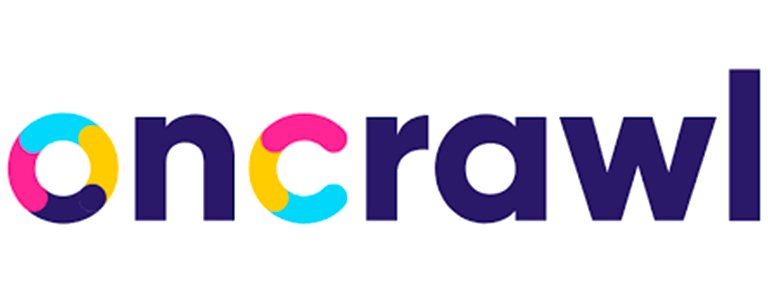Outreach still remains one of the best tactics for link building or even digital marketing as a whole. It comes with many different advantages, though it’s quite a tedious process. Outreach requires using different channels and incentives if you want to make your contact meaningful. But apart from the needs, you’ll need to meet within your process of outreach, above all, it requires patience and SEO research. Editors and webmasters don’t just go around left and right, inserting links into their content. Now, there are a lot of SEO agencies and outreach specialists out there but there’s still a lot of content to fight for.
People will decline your offer. In fact, this is the majority of cases. But don’t get discouraged. The quality links that you can get from outreach are well worth the hassle.
If you want to make your content marketing viable with a proper outreach campaign, read on.
SEO Outreach Process
I believe that outreach should be an integral part of all SEO campaigns. In fact, we base most of our agency’s doings on outreach. Here’s how we do it:
Research for pages with relevant content within your niche
The first step to reaching out is finding blogs that would be likely to accept your contribution, whatever it is. As an SEO agency, we’ve got many tools at our disposal. One such app we use is Linkody.
The process looks like this:
- I follow the new backlink acquisitions of my client’s competitors.
- I shortlist the pages whose editors I deem the most worthy of messaging to create a prospect list. I exclude direct competitors’ websites, low page authority, and spammy ones by using filters, leaving me with only the target web pages.
- I only look through new backlinks that are a few days old, at most.
- I find and verify the outreach email of the article’s writer using tools like Hunter.
- I begin reaching out with great content.
The most success I’ve had using this tactic is to simply message the article’s creator and ask them if one of my clients (who has expertise on a particular topic) could become an additional reference.
Instead of asking if they’d like additional content, I simply go ahead and write the pitch and send it straight to them.
I choose to use the Sniper approach instead of spray and pray. First of all, I research the target markets, looking for competitors and getting to know their characteristics. The pages I select most often look like they could use a few extra points covered in detail, have acceptable domain authority and good organic traffic. That way, by providing true value, I can get the editors to insert the quote in their content, along with a home page link.
Still, using Linkody is not the only way of looking for relevant pages.
You could limit yourself to the SERP. Google has surprisingly many features that facilitate searching for such opportunities.
See, Google’s search algorithm has a lot of useful commands that can pinpoint your search. For example, you could use keyword + “guest post” , “contribute” , “write for us” for guest blog post opportunities. Still, this is a pretty outdated technique and websites with such terms within them raise a red flag. I believe that it’s better to look for prospects that don’t explicitly offer guest posting and pitch them anyway.
Another thing that I found pretty annoying about such websites is the fact that they often want to charge money for posting your content. Interestingly, most of them don’t even include it in their guidelines for posting, probably due to the fear of being penalised by Google.
Using inurl:keyword, you can find pages that contain a specific phrase in their url. This is especially useful for finding expert or link roundups. Use different variations of inurl and intitle (keyword used in the title) to find opportunities.
Skyscraper technique, while it has been overused quite a bit lately, it’s still relatively effective. It consists of finding blog posts that rank in the top 3, looking at their referring domains, writing top-quality content, and messaging them to link to your post instead, increasing your trust and citation flow.
Simple enough, right?
Backlinko is ranked second in the SERP for seo writing. As you can see, the page has 47 referring domains. That’s 47 opportunities! Now, this is a pretty tough keyword, and Brian Dean of Backlinko is established as the SEO expert.
Still, topping his article is possible. Make it longer, give a detailed description of points he only touches upon, and make the writing better.
While blogger outreach might come across as spammy, if you’re ready for a commitment of your resources to provide real value, you’ll surely achieve your goals.
It’s not about the links. It’s about building relationships
Network is power. Contacts can get you more than links. The more extensive your network, the more possibilities you get. Building positive relationships with link building outreach is a lovely side effect of the whole ordeal. I believe that it should be your primary target. Measure your successes not in backlinks but in successful partnerships.
Of course, you need to meet your targets for each client website. For this, counting your backlinks is helpful. But if you want to quantify yourself, then measuring your outreach effectivity per each partner gained is the way to go. Still, if each partnership can land you five new links, then it’s far more effective than simple pitching. And, it requires less effort.
Another benefit of outreach is building your brand awareness. Appearing on many prominent websites in a short amount of time can result in a tremendous increase in traffic. This will create a feeling that you’re everywhere, establishing your brand’s (and your very own) position as an industry expert.
You’ll need an incentive
You can’t just go around asking for favours and begging for links. If you can’t provide your respondent with value, they won’t care about your offer. Being in a situation where you can’t really offer much in terms of measurable worth leaves you only with tools to start a conversation. This is the first step to establishing a relationship.
Provide feedback
If you liked the article somebody has written, then perhaps it would be a good choice to offer some feedback concerning their content. Writers are creative people who find feedback extremely valuable, especially from industry experts. This could also be a great ice-breaker. Getting someone to like you is half the success.
Social share
Appreciating someone’s hard work by a simple social share is an acceptable method of first contact as well. Tell them that you loved the content and that you shared it across your social media. Your target audience would appreciate that. I know I do.
If you do have something meaningful to offer, do it. Your success rate will increase by quite a bit.
Links
Now, if you have a backlink on your (or somebody else’s) site you could offer, then reaching out successfully becomes much more manageable. If you have strategic pages, then it’s worthwhile to link to them while using your old, less valuable pages for outbound links. A referring domain is a referring domain; your contact will appreciate the link, especially the SEO specialists.
Site issues
If you’re keen on using tools like URL Profiler or SEMrush, then you can analyse your potential partner’s website and provide them with insight regarding any errors. Whether they’re 404s that you could fill with your articles, UX error, miswritten text, or coding mistake, tell them. If you can offer a solution, they’ll be thankful.
Content gap analysis
You’ll need tools for that as well. You can go a step further and see what kind of content your contact is missing from their website that their competitors have.
If you go ahead and send your contact a screenshot like that, along with an article that’s optimised for the best opportunities, there’s a much better chance of them being positive. This is only a part of the work you need to do; creating an appropriate message is next.
General rules for crafting a message
Now that you know how to find opportunities, you need to learn some ground rules for writing an email.
Get rid of cliched templates.
Don’t just go to some pseudo-omniscient website and take a template from there. Chances are, people are using it already. This is just low-effort outreach which decreases your chances of success considerably. Do your best to craft an email yourself.
Go for personalisation.
Make sure to include as many variables as possible in your email. By using CRM software, you can automate the process of sending, along with inserting personalised information.
Be polite.
Plain and simple. Nobody likes rudeness.
Be upfront with your proposition.
Don’t beat around the bush. If you’ve already broken the ice, tell them why you’re messaging and what your goal is. People like honesty. In fact, if you’re not sincere, your potential partner might think that something is fishy.
Explain the value that you can provide.
Why should people not charge you money for a link if you charge money from your clients for building links for them? While this is generally frowned upon by Google, it’s a pretty unfair move by the search engine folks. See, they want to redirect the money flow to their Google Ads, instead of letting other people make money on links. Of course, it’s all about the money — it’s their search engine, they can do whatever they want basically.
Now, instead of money, you can offer a number of valuable options. Whether it’s backlinks, feedback or a simple social share, people appreciate such things. If you manage to be genuine in your message, you increase your chances drastically.
Follow-up, but be reasonable.
One or two follow-ups after a couple of days are alright, but don’t overdo it. If somebody is not replying then they’re either not interested, or the email address you have is outdated. It’s a waste of time for you.
Outreach Strategies
There are many strategies that you can utilise. I’m going to describe the ones that have been, by far, the most effective for me.
HARO
If you’re not yet familiar with HARO, it’s a platform that associates journalists, publishers, editors, and content writers as well as their sources. Tri-daily, automated emails are sent with queries from publishers that sources can then respond to with content.
Now, what I found highly effective was to create my own query and look for responses from SaaS companies and other agencies. Then, I publish the article, along with the links to the SaaS target websites that responded on one of the websites in our network. This provides an incentive for further cooperation.
SaaS companies are quite willing to collaborate with us and exchange links, scoring us additional referring domains. Since their business operates online in its entirety, their marketers know what’s up, which makes it easier for us. Instead of explaining our proposition to a potential prospect, we go straight into the offer.
Another technique we use is to simply look for SaaS companies within the queries themselves and then propose a partnership. Our response rate is at about 50% combining these two methods, with a pitch-to-placement ratio at 35% or so. I consider this incredibly effective.
Lastly, you can simply answer the queries to get a backlink by getting your comment accepted by a target publisher. Still, this is reactive PR, wherein you respond to somebody’s request instead of you asking for something. This usually results in a branded backlink where you won’t be able to choose the anchor text.
Broken link building
Broken link building is an outreach strategy that involves looking into a website’s content via tools like SEMrush and finding broken links. Such 404 links work to the detriment of the website, so helping the webmasters out by spotting these and offering your relevant content for them to link back to can be fruitful in high-quality backlinks.
Roundup posts
There are countless blogs that conduct expert roundups, where you can gather powerful backlinks. While these always contain a lot of other outbound links, a referring domain is a referring domain. Similarly to HARO responses, this is reactive PR, where your chances of success can be a bit bigger.
Blog post additions
Now, this is something that our SEO team has been doing a lot lately. What we do is, look for new posts that certain bloggers have written (mostly the ones on HARO) and ask if our client can become an extra reference. People won’t have time to reply to us if we plainly ask if they could include our addition. Instead of asking, give them relevant content immediately.
We also had situations where one of our clients’ comments got accepted as a knowledgeable source, and we followed up with another one of our clients. The editors considered the additions as good enough and included them in their articles after a day or two.
Creating a comment for an already-published article is more straightforward than responding along with dozens of other people on HARO. You know precisely what has been covered and what could use a little bit more in-depth description. For this reason, getting your content published by crafting a unique comment is far easier.
Wrap-up
The key takeaways from this post would be:
- Don’t go around asking for favours. Instead, provide value.
- Go for unconventional ways of researching for potential partners.
- Use HARO.
- Create your own templates.
- Get rid of cliches and personalise.
- Use tools for automating email outreach if you want to do it in bulk.
We’ve been using outreach ever since our agency’s humble beginnings, and we still find success. As we try out different ways of contacting, messaging and researching, we’re getting increasingly effective, and our network is growing quickly. For this reason, I encourage you to try out new methods to utilise in your SEO campaign, as you may never know what will work the best for you! PS. don’t forget to track your keyword ranking.



















